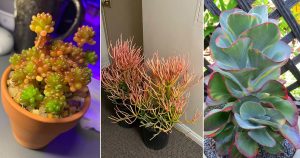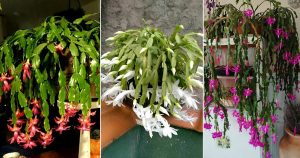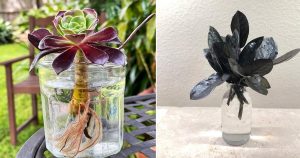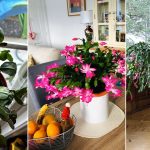Pink succulents make your garden look attractive with their soft, dreamy charm that instantly catches the eye—Have a look!
Pink succulents steal the spotlight in any garden. Their beautiful color comes from heat, temperature changes, or natural pigmentation, hence a gardener’s favorite. So, take a look at all these pink succulents we’ve compiled just for you!
Best Pink Succulents
1. Perle von Nurnberg
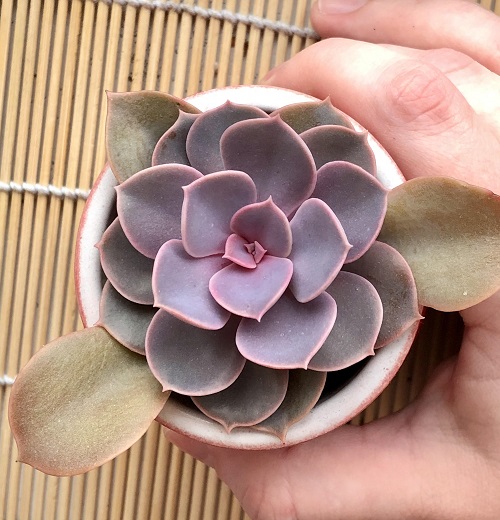
Botanical name: Echeveria ‘Perle von Nurnberg’
Perle von Nurnberg forms a tight, symmetrical rosette with pointed leaves. When grown in full sun, its silvery-grey to lavender leaves take on soft pink overtones. It grows up to 6 inches and produces pink flowers with yellow centers.
An interesting fact about this plant is that it’s one of the most widely grown—and photographed—succulents in the world.
2. Lola succulent
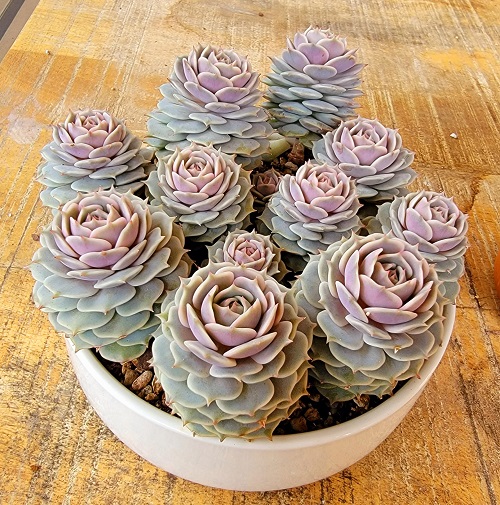
Botanical name: Echeveria Lola
Lola succulent is drought-tolerant, with fleshy leaves that store a lot of water. Because of this, it’s important not to overwater it as that can lead to root rot and other issues. The flowers are peachy-pink, bell-shaped, and usually bloom in spring. Lola is a low-maintenance plant and a gardener’s favorite. And, the fun fact is it’s a top choice for weddings and DIY décor because of its rose-like appearance
3. Afterglow Echeveria
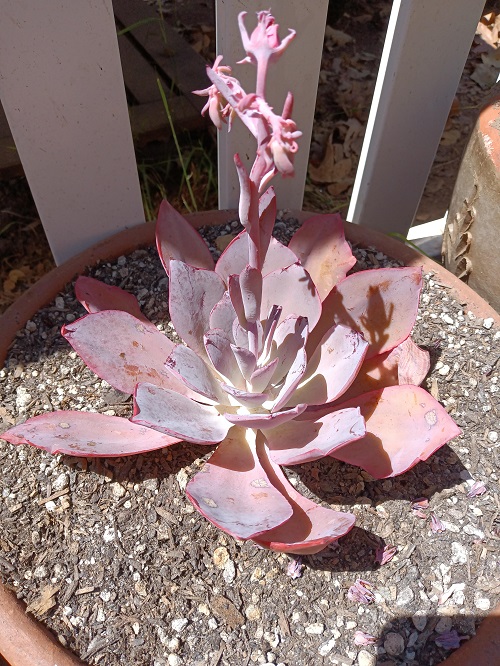
Botanical name: Echeveria ‘Afterglow’
Afterglow Echeveria is perfect for dry gardens, thanks to its large lavender-pink leaves that seem to glow. It produces bright orange-red flowers that emerge from the base or top. This plant can grow quite large—up to 12–16 inches—and has thick, powdery leaves shaped like spoons.
It needs full sunlight, prefers low humidity, and may lose its color in low light or if there’s too much nitrogen in the soil. Just treat it right, and it’ll put on a show like no other.
4. Pink Jelly Bean Plant
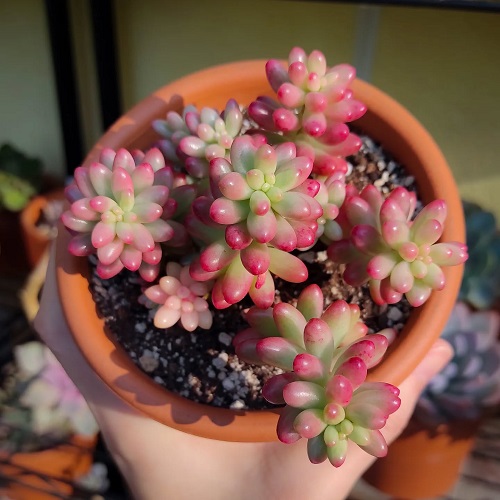
Botanical name: Sedum rubrotinctum ‘Aurora’
Straight from Mexico, the Pink Jelly Bean plant looks just like a bunch of tiny jelly beans that turn pink or red under bright sunlight. It blooms in early summer and spring with small, star-shaped yellow flowers. It stays compact at around 4–6 inches tall and thrives in full sun, warm temperatures, low water, and well-draining soil.
5. Ghost Plant

Botanical name: Graptopetalum paraguayense
The Ghost Plant belongs to the jade family and is native to Tamaulipas, Mexico. It has fleshy, pointed leaves coated in powdery wax, often appearing silvery-grey, bluish, or even purple. In bright sun or cooler weather, the leaves blush pink. Its tiny, star-shaped flowers add to the charm.
The “ghostly” look comes from the Farina on its leaves, which protects it from sun and water loss. This succulent does well in hanging pots in warm climates.
Note: It’s toxic to pets if ingested, so keep it out of their reach.
6. Debbie
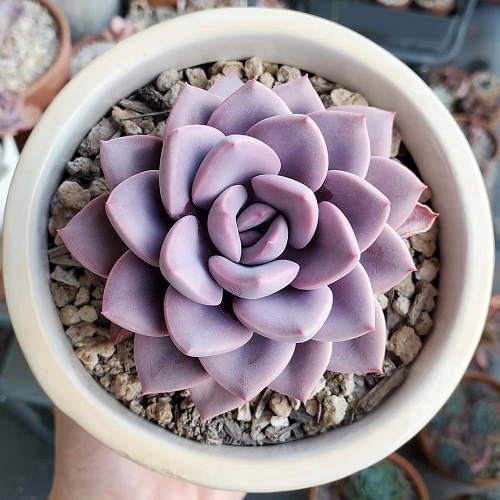
Botanical name: Graptoveria ‘Debbie’
Graptoveria ‘Debbie’ forms flower-like clusters with frosty pink leaves that become even more vibrant in cooler temperatures. It blooms in spring with small, apricot-colored flowers. This plant prefers bright, indirect sunlight, minimal watering, and well-draining soil. It’s slow-growing but completely safe for humans and pets. Good things come to those who wait—and Debbie is proof of that.
7. Pink Butterflies

Botanical name: Kalanchoe x houghtonii ‘pink butterflies’
Kalanchoe ‘Pink Butterflies’ features tall stems with gray-green or bluish leaves, and bright pink baby plantlets grow along the edges—hence the name “butterflies.” In the right conditions, it produces pinkish-orange tubular flowers.
Additionally, it can grow up to 12–18 inches tall and makes a stunning addition to pastel-themed arrangements. But like many Kalanchoes, this one is toxic to pets if ingested.
8. Sunrise succulent
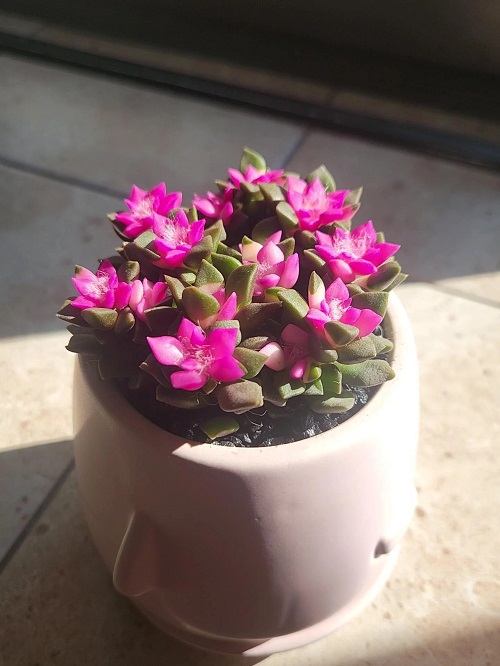
Botanical name: Anacampseros rufescens
Sunrise succulent can be found in South Africa and it has leaves that are olive green on one side and wine red on the other, turning reddish-brown to purple in dry or hot conditions. It’s a low-growing plant and has pink flowers with long stems that open in the afternoon and close by nightfall.
This beauty is a real early bird—its colors and blooms shine brightest when the sun is high. But be aware that its leaves are toxic so pets and small children should stay away and it requires well-draining soil plus direct sunlight.
Now you have the best list of pink succulents. So, Pick your favorite ones and try to grow them and remember to share your growing experiences with us in the comments!

